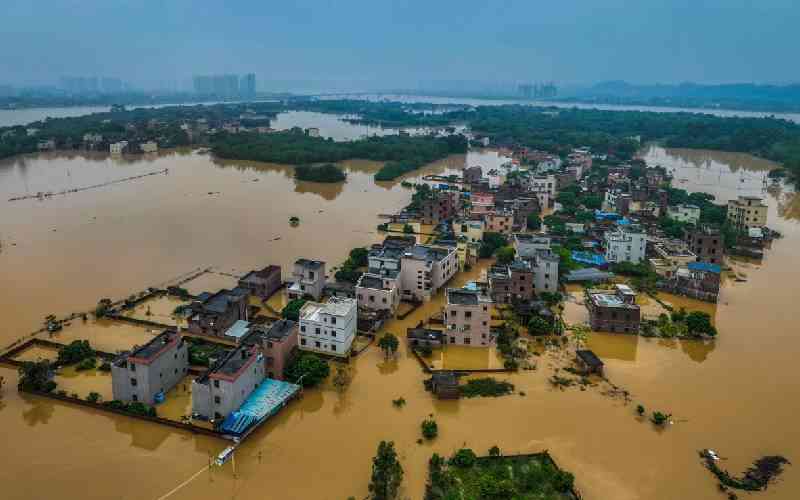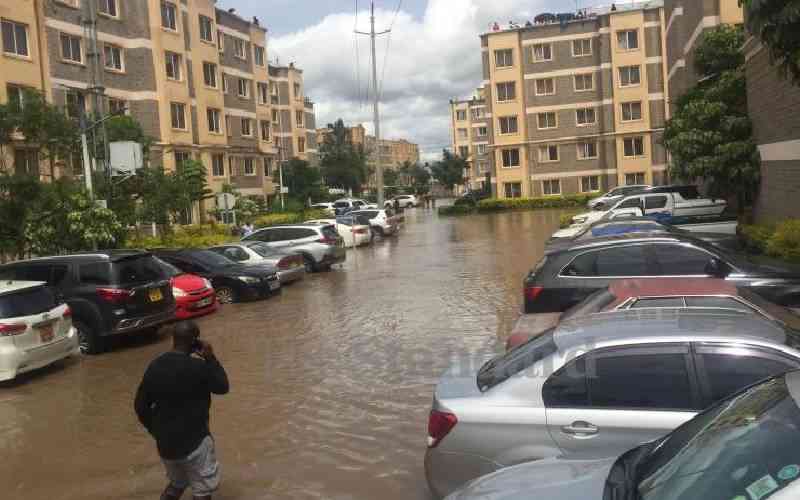In recent times, weather forecasts by the Kenya Meteorological Department have been down pat. Often, rains have come as predicted with the intensity forecast. For that reason, there is no plausible excuse for the ravages that the current short rains are causing across the country for, as adage goes; to be forewarned is to be forearmed.
Since the onset of the short rains in October, at least 20 people have lost their lives in the mudslides and flooding that have attended the rains. In Miuno, West Pokot County, two children were killed in a landslide on last Saturday.
On Friday last week, two people lost their lives while 15,000 were left homeless following floods in Lodwar, Turkana County. On the same day, four family members were killed in a mudslide in Marakwet East.
On Thursday last week, the Muhongo Bridge along the Mombasa-Lungalunga road was washed away following heavy rains while three people died in Meru County. In Moyale a number of livestock have been washed away by floods. These cases represent what is happening in many other areas across the country.
The ongoing devastation caused by heavy rains follows a script that is, by now, all too familiar to Kenyans. It has become a ritual every time that the rains come calling. So, we may ask; where did the rains start beating us? With advance warnings, the expectation is that both tiers of government would activate their disaster preparedness mechanisms to counter effects that everybody knows would follow heavy rainfall.
The likelihood of mudslides in prone areas is known to relevant government agencies that have mappings of the fault lines on which the slides occur. The agencies have the wherewithal to monitor rains and river levels. With such knowledge, it behoves the Government to conduct civic education aimed at sensitising people on the imminent dangers. Where need arises, forced evictions would be preferable to loss of life as a result of ignorance. At times, victims of floods and mudslides get unfairly blamed for failure to move to safety.
Water always finds its natural level, which demands prudent planning of constructions and human settlements. Constricting waterways and destroying the environment in favour of human habitation, as happened in the Mau catchment area, are some of the causes of flooding. The construction of dykes on River Nzoia and Nyando lessened the perennial disastrous effects of flooding. Such action should be replicated along all major rivers that have caused devastation after flooding. Rains ought to be a blessing, not a curse.
 The Standard Group Plc is a
multi-media organization with investments in media platforms spanning newspaper
print operations, television, radio broadcasting, digital and online services. The
Standard Group is recognized as a leading multi-media house in Kenya with a key
influence in matters of national and international interest.
The Standard Group Plc is a
multi-media organization with investments in media platforms spanning newspaper
print operations, television, radio broadcasting, digital and online services. The
Standard Group is recognized as a leading multi-media house in Kenya with a key
influence in matters of national and international interest.
 The Standard Group Plc is a
multi-media organization with investments in media platforms spanning newspaper
print operations, television, radio broadcasting, digital and online services. The
Standard Group is recognized as a leading multi-media house in Kenya with a key
influence in matters of national and international interest.
The Standard Group Plc is a
multi-media organization with investments in media platforms spanning newspaper
print operations, television, radio broadcasting, digital and online services. The
Standard Group is recognized as a leading multi-media house in Kenya with a key
influence in matters of national and international interest.









